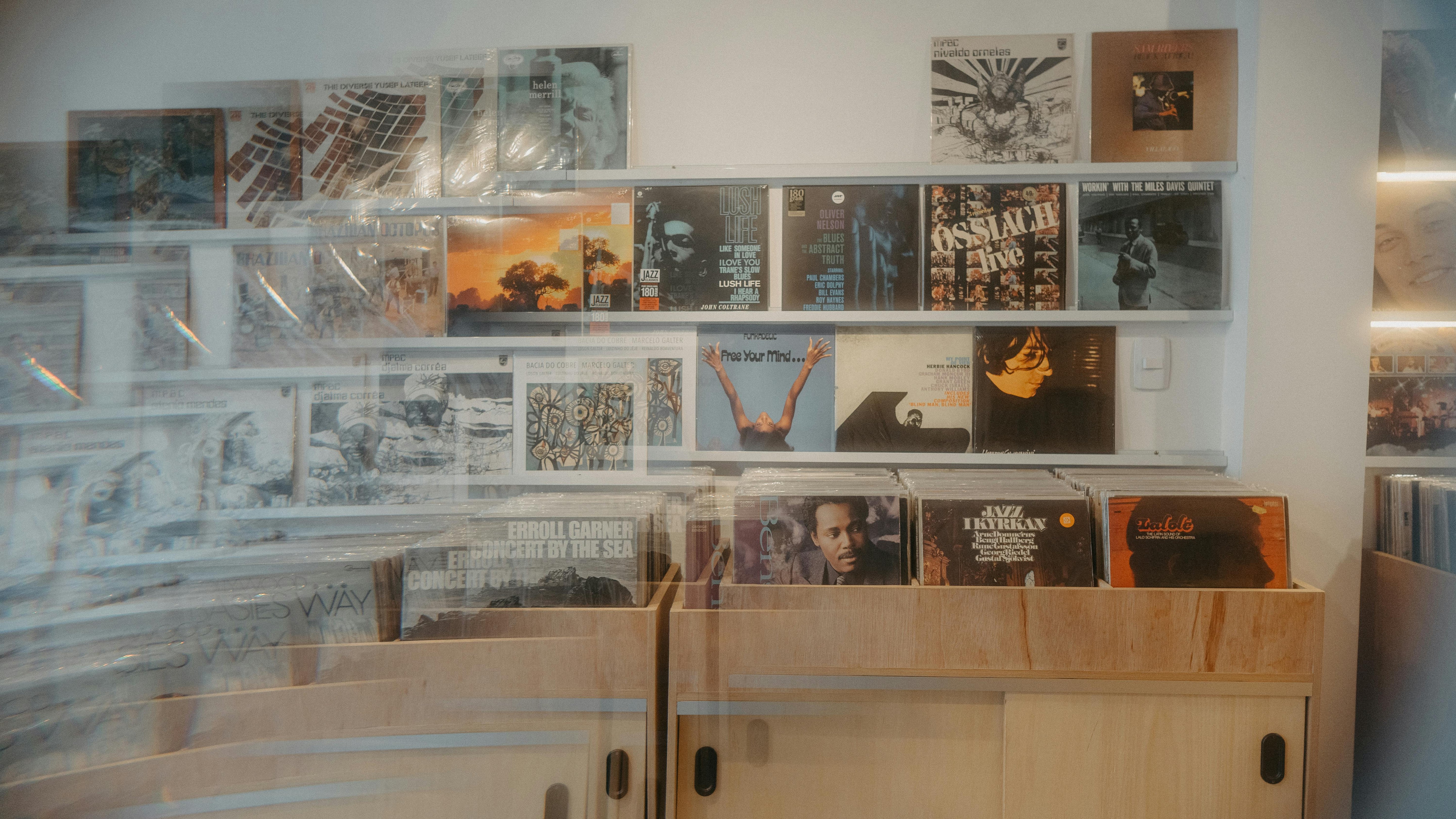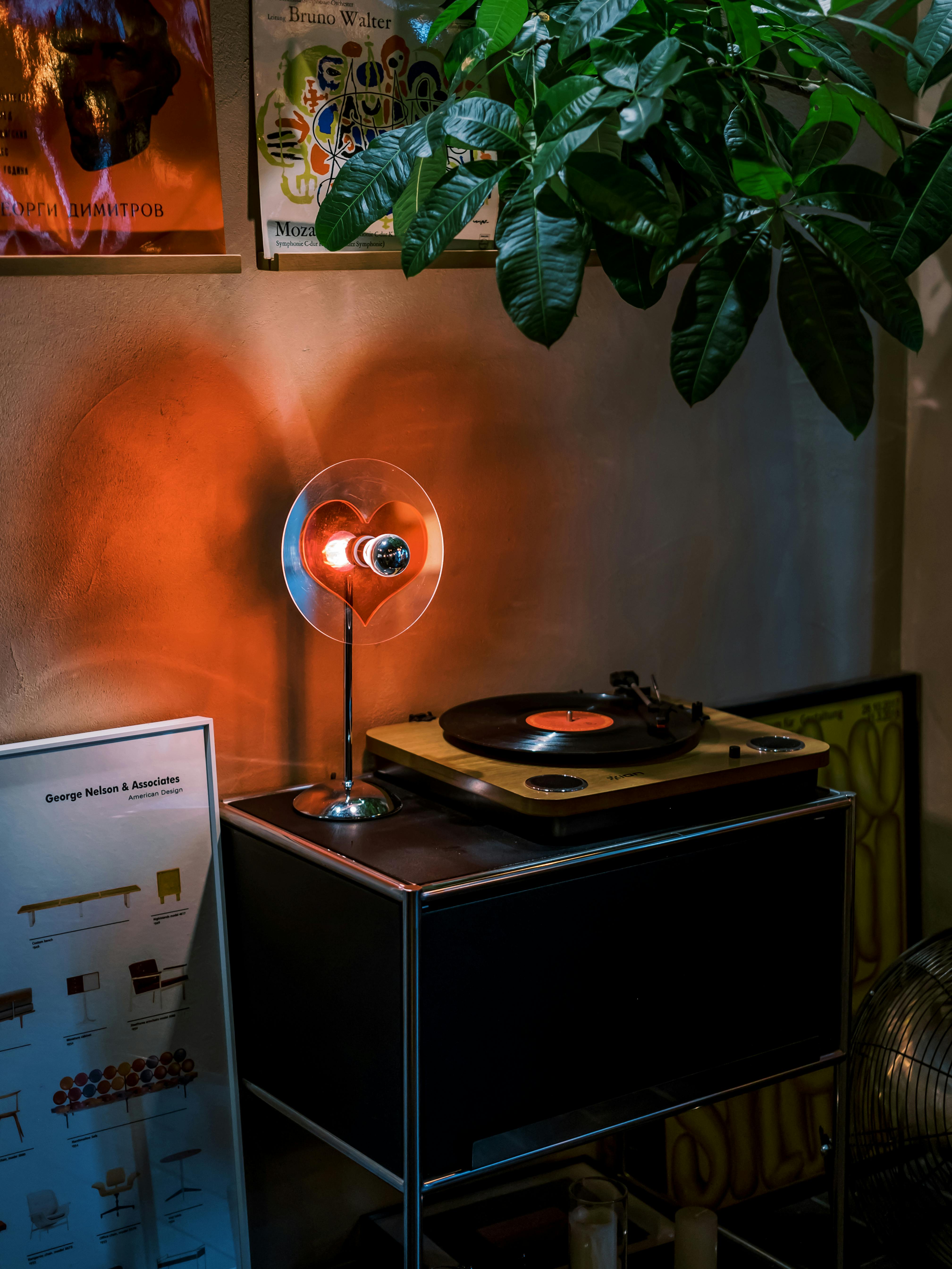First, Queen’s A Night at the Opera. The needle drops, and from the speakers erupts the layered, operatic, planet-sized ambition of Freddie Mercury. It’s a sound forged in the analog fire of 1970s studio wizardry—tape saturation, tube preamps, and a hundred vocal overdubs bouncing between spools of magnetic tape.
Next, Taylor Swift’s folklore. The needle drops again, and this time, what emerges is an intimate, fragile world. It's the sound of a breath held before a lyric, the subtle texture of a finger sliding on a guitar string, a voice so close it feels like a secret being whispered directly into your ear.
One is a theatrical explosion; the other is a pin-drop confession. They are artists from different eras, with different sonic palettes. Yet, for a growing legion of fans, the definitive way to experience both is through the same "archaic" medium: the vinyl record.
Why? The simple answer is "warm, analog sound." But that's a lazy, incomplete explanation. The truth is far more profound. Vinyl does not treat these two artists the same way. It acts as an alchemist, performing a different kind of magic for each.
For the Analog Native (Freddie Mercury): The Pursuit of the Source Code
Freddie Mercury and Queen created their masterpieces in an all-analog world. The signal path was a physical chain of events: a voice vibrating a microphone diaphragm, creating an electrical current that magnetized particles on a tape, which was then physically cut into the master lacquer.
When you play an original or well-mastered vinyl pressing of a Queen album, you are not just listening to a recording; you are engaging with the ghost of the master tape.
-
The "Warmth" of Authenticity: The "warmth" here isn't a vague, cozy feeling. It's the audible evidence of the analog process. It's the slight, pleasing compression and harmonic richness added by running signals hot onto analog tape. It's the sound of a real mixing console, with all its unique electronic personality. A digital file, by contrast, is a perfect, clean snapshot of that tape. Vinyl is a more direct, continuous, physical transfer of its energy.
-
Unpacking the Wall of Sound: Queen's productions are famously dense. On a lesser format, this "wall of sound" can collapse into a noisy mush. A high-quality turntable with excellent channel separation (the ability to keep the left and right channels distinct) and a sophisticated stylus can "unpack" these layers. You begin to hear the individual threads in the tapestry—a specific backing vocal here, a panning guitar there. You hear the space in the studio, not just the sound.
For an artist like Freddie, vinyl is a time machine. It peels back the layers of digital remastering and brings you as close as possible to the source code of the performance.
For the Digital Native (Taylor Swift): The Creation of an Aura
Taylor Swift's music, especially her recent work, is "born digital." It's recorded and mixed with surgical precision inside a computer (a Digital Audio Workstation). The master is a pristine, perfect data file. So why translate this perfect file onto an imperfect physical medium?
Because it’s not about recreating the past; it’s about creating a more profound present.
-
The "Warmth" of Tangibility: For a digital native, the warmth of vinyl is less about tape saturation and more about the psychological and physical experience. It's the act of owning a piece of a digital artist. The large-format album art, the liner notes, the weight of the record—these things create a tangible aura around the music that can't be replicated by a thumbnail on a screen. The ritual of playing the record commands focus, transforming passive streaming into active, intentional listening.
-
Imparting Character: When a pristine digital file is pressed to vinyl, the medium itself imparts a subtle character. The phono cartridge adds its own sonic flavor. The very nature of a physical groove being traced introduces infinitesimal nuances. It's like taking a perfect digital photograph and printing it on high-quality, textured art paper. The image is the same, but the final object has a new depth and character. This is especially potent on albums like folklore, where the vinyl format enhances the intended intimacy, making the quiet moments feel even more personal and fragile.
For an artist like Taylor, vinyl is an anchor. It takes an ethereal digital creation and gives it weight, permanence, and a new tactile dimension.
The Turntable: The Unifying Interpreter
Whether unearthing the past or grounding the present, the entire experience hinges on the quality of the turntable. A record player is not a passive box; it's an active interpreter. Its job is to read a complex physical language without mispronouncing a single word.
A low-quality turntable will fail both artists equally. It will turn Queen's wall of sound into mud and crush the delicate, breathy details of Swift's vocals into noise. The stylus will fail to trace the complex grooves, the unstable platter will warp the pitch, and motor rumble will invade the quiet passages.
This is why the choice of hardware is paramount. A turntable like the XJ-HOME Recoder is built on the principle of faithful interpretation. Its solid plinth, belt-driven platter, and, most critically, its adjustable tonearm and quality cartridge, are designed to do one thing: trace the groove with absolute precision. It is engineered to have the power and stability to handle Freddie's dynamic range while also possessing the delicacy and low noise floor required to reveal the soul in Taylor's whispers. It’s the kind of instrument that respects the music, regardless of its era.
Conclusion: A Deeper Connection
The power of vinyl is not a one-size-fits-all magic trick. It's a nuanced medium that brings the discographies of our iconic singers to life in different ways. It can be a work of sonic archaeology for an analog legend like Freddie Mercury, or a creator of tangible aura for a digital-era storyteller like Taylor Swift.
In both cases, it closes the distance between the listener and the artist, transforming a simple act of listening into a richer, more meaningful connection.
Understanding Check: Questions & Answers
1. Question: The article claims vinyl acts as a "time machine" for Freddie Mercury but an "anchor" for Taylor Swift. Explain this distinction based on the artists' native recording formats.
Answer: This distinction is based on the origin of the master recording. Freddie Mercury's work was analog-native. The master was a physical tape. Playing the vinyl is an attempt to get as close as possible to that original physical source, bypassing layers of digital conversion. It is a journey back in time to the intended sound. Taylor Swift's recent work is digital-native. The master is a perfect data file. Pressing it to vinyl is not a journey back to the source, but rather the act of giving an ethereal digital file a physical anchor in the real world. It's about creating a tangible artifact from an intangible source, enhancing its emotional weight and permanence for the listener in the present moment.
2. Question: Why is a feature like "channel separation" on a high-quality turntable particularly important for appreciating a dense Queen production?
Answer: "Channel separation" refers to a turntable cartridge's ability to prevent audio from the left stereo channel from leaking into the right, and vice versa. Queen's productions are famous for their complex stereo imaging and layered overdubs, where different instruments and vocals are intentionally placed specifically in the left or right channel to create a wide, theatrical soundstage. On a low-quality turntable with poor channel separation, these distinct signals bleed into each other, collapsing the stereo image and turning the "wall of sound" into a congested, muddy mono-like sound. A turntable with excellent channel separation maintains the integrity of these distinct placements, allowing the listener to "unpack" the layers and hear the production with the clarity and spatial dimension that Freddie Mercury and his engineers intended.
3. Question: If a modern vinyl record by an artist like Taylor Swift is sourced from the exact same digital file available on streaming services, what tangible and intangible value is the fan actually acquiring when they purchase and play the record?
Answer: The fan is acquiring several layers of value beyond the raw audio data. Tangible value comes from the physical artifact itself: the large-scale album art, the lyric sheets and liner notes, the aesthetic of the colored vinyl disc, and the simple fact of ownership of a physical object. Intangible value is created through the ritual and focus of the listening experience. Unlike passive streaming, playing a record is a deliberate, single-tasking act that commands attention and fosters a deeper connection to the album as a whole. Additionally, the vinyl medium imparts its own subtle sonic character—a form of coloration from the cartridge and the physical nature of playback—which creates a unique, often "warmer," listening experience that is different from the sterile perfection of the direct digital stream. They are acquiring not just the music, but a new, more intimate and focused way of experiencing that music.





Leave a comment
All comments are moderated before being published.
This site is protected by hCaptcha and the hCaptcha Privacy Policy and Terms of Service apply.